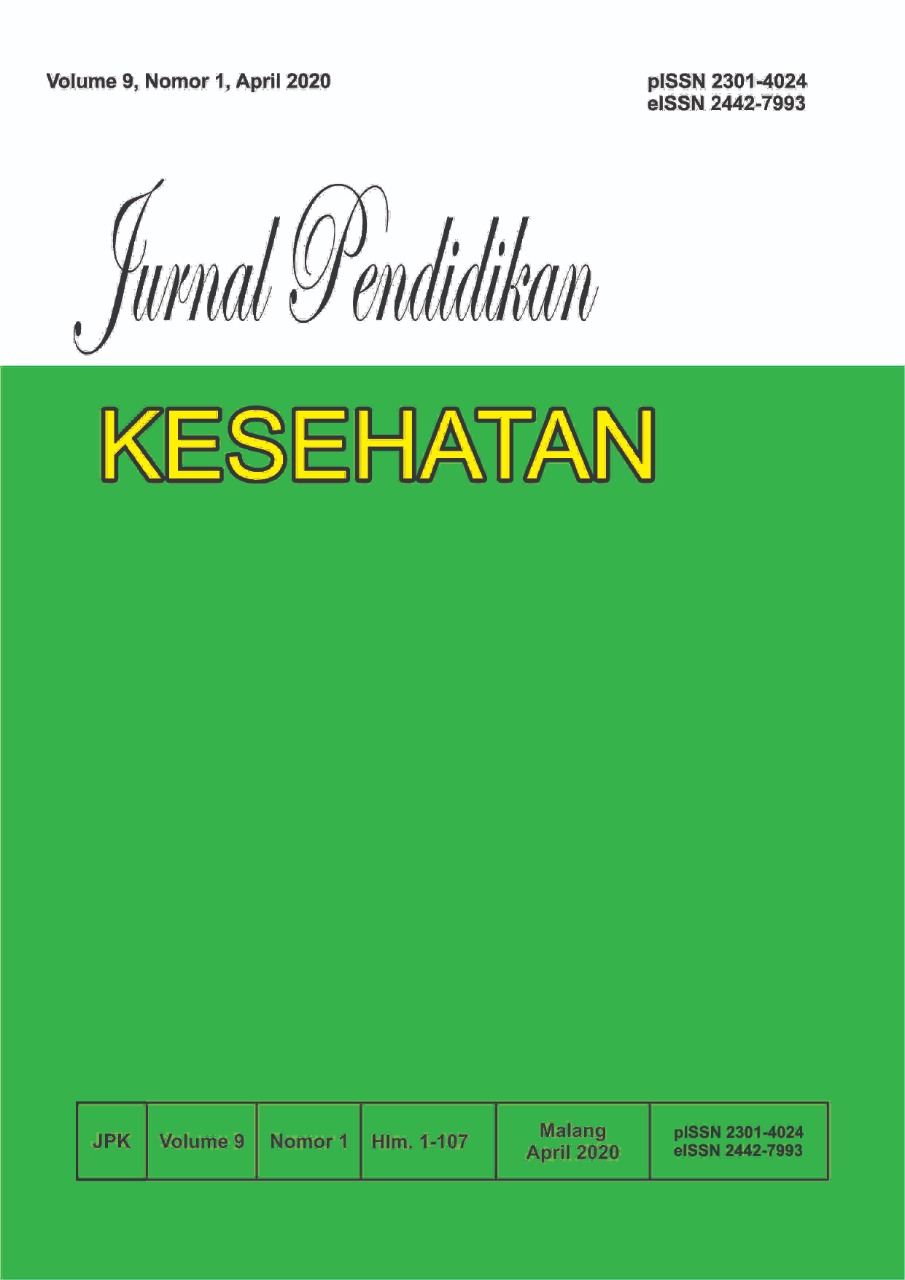Definisi dan Jalur Penularan Severe Acute Respiratory Syndrome Coronavirus 2 atau COVID 19
DOI:
https://doi.org/10.31290/jpk.v9i1.1513Kata Kunci:
Severe Acute Respiratory Syndrome Coronavirus 2 (SARS CoV-2), Covid-19, Tranmisi, ReviewAbstrak
Sejak pertama kali terlaporkan pada akhir 2019 Severe Acute Respiratory Syndrome Coronavirus 2 atau SARS CoV 2 atau COVID 19 telah menginfeksi lebih dari 2 juta orang hanya dalam waktu kurang dari 5 bulan diseluruh dunia. Berdasarkan data diatas penulis akan membuat review dan menjelaskan definisi dan juga berbagai rute penularan infeksi berdasarkan bukti yang telah dipublikasikan dan dirangkum. Review dilakukan pada April 2020, dengan menelusuri artikel melalui database daring dan kata kunci Review AND COVID 19 ATAU Severe Acute Respiratory Syndrome Coronavirus 2 AND Review ATAU Coronavirus Disease 2019 AND Review AND transmission route. SARS CoV 2 atau COVID 19 merupakan virus dari jenis beta coronavirus dengan tingkat penularan yang lebih tinggi dibandingkan SAR CoV ataupun MERS. Jalur penularan antar manusia yang paling aktif adalah melalui kontak dekat droplet dan aerosol, meskipun demikian virus masih terdapat dalam tinja, air mata dan urin. Namun potensi penularan masih perlu dipelajari. Masa inkubasi virus adalah 0 sampai dengan 24 hari dengan rata rata dari gejala pertama hingga kematian adalah 3 sampai dengan 14 hari.
Referensi
Chen, H. et al. (2020) ‘Clinical characteristics and intrauterine vertical transmission potential of COVID-19 infection in nine pregnant women: a retrospective review of medical records’, The Lancet. Elsevier Ltd, 395(10226), pp. 809–815.
Donders, G. G., Zodzika, J. dan Rezeberga, D. (2014) ‘Treatment of bacterial vaginosis: What we have and what we miss’, Expert Opinion on Pharmacotherapy, 15(5), pp. 645–657.
Guan W, Ni Z, Hu Y, Liang W, He J, et al. 2020. Clinical characteristics of 2019 novel coronavirus infection in China.
Hoffmann M, Kleine-Weber H, Krüger N, Müller M, Drosten C, Pöhlmann S. 2020. The novel coronavirus 2019 (2019-nCoV) uses the SARS-coronavirus receptor ACE2 and the cellular protease TMPRSS2 for entry into target cells. bioRxiv.
Ji, W. et al. (2020) ‘Homologous recombination within the spike glycoprotein of the newly identified coronavirus may boost cross-species transmission from snake to human.’, Journal of medical virology.
Liu Y, Gayle AA, Wilder-Smith A, Rocklov J. 2020. The reproductive number of COVID-19 is higher compared to SARS coronavirus. J Travel Med.
Rothe C, Schunk M, Sothmann P. 2020. Transmission of 2019- nCoV infection from an asymptomatic contact in Germany. N Engl J Med ;382:970-1.
Sahu, K. K., Mishra, A. K. and Lal, A. (2020) ‘COVID-2019: update on epidemiology, disease spread and management’, 90. Monaldi Archives for Chest Disease. volume 90:1292
Sahu KK, Mishra AK, Lal A. 2020. Latest updates on COVID-2019: A changing paradigm shift. J Med Virol.
Susilo, A. Rumende M. Pitoyo C W. Santoso W D. Yulianti M. Herikurniawan Robert Sinto1 et al. (2020) ‘Coronavirus Disease 2019?: Tinjauan Literatur Terkini Coronavirus Disease 2019?: Review of Current Literatures’, Jurnal Penyakit Dalam Indonesia, 7(1), pp. 45–67.
Simmons G, Reeves JD, Rennekamp AJ, Amberg SM, Piefer AJ, Bates P 2004. Characterization of severe acute respiratory syndrome-associated coronavirus (SARS-CoV) spike glycoprotein-mediated viral entry. Proc Natl Acad Sci USA.
Wang, L. et al. (2020) ‘A review of the 2019 Novel Coronavirus (COVID-19) based on current evidence’, International Journal of Antimicrobial Agents. Elsevier B.V., p. 105948.
Wang W, Tang J, Wei F. 2020. Updated understanding of the outbreak of 2019 novel coronavirus (2019-nCoV) in Wuhan, China. Journal of medical virology.
Wang J, Zhao S, Liu M, Zhao Z, Xu Y, Wang P, et al. 2020. ACE2 expression by colonic epithelial cells is associated with viral infection, immunity and energy metabolism.
Wu A, Peng Y, Huang B, Ding X, Wang X, Niu P, et al. 2020. Genome Composition and Divergence of the Novel Coronavirus (2019-nCoV) Originating in China. Cell host & microbe.
Wrapp D, Wang N, Corbett KS, Goldsmith JA, Hsieh CL, Abiona O, et al. Cryo-EM structure of the 2019-nCoV spike in the prefusion conformation. Science (New York, NY). 2020.
Xiao F, Tang M, Zheng X, Li C, He J, Hong Z, et al. 2020. Evidence for gastrointestinal infection of SARS-CoV-2. medRxiv.
Xia J, Tong J, Liu M, Shen Y, Guo D. 2020. Evaluation of coronavirus in tears and conjunctival secretions of patients with SARS-CoV-2 infection. Journal of medical virology.
Xu X, Chen P, Wang J, Feng J, Zhou H, Li X, et al. 2020. Evolution of the novel coronavirus from the ongoing Wuhan outbreak and modeling of its spike protein for risk of human transmission. Sci China Life Sci.
Zhang H, Penninger JM, Li Y, Zhong N, Slutsky AS. 2020. Angiotensinconverting enzyme 2 (ACE2) as a SARS-CoV-2 receptor: molecular mechanisms and potential therapeutic target. Intensive Care Med.


